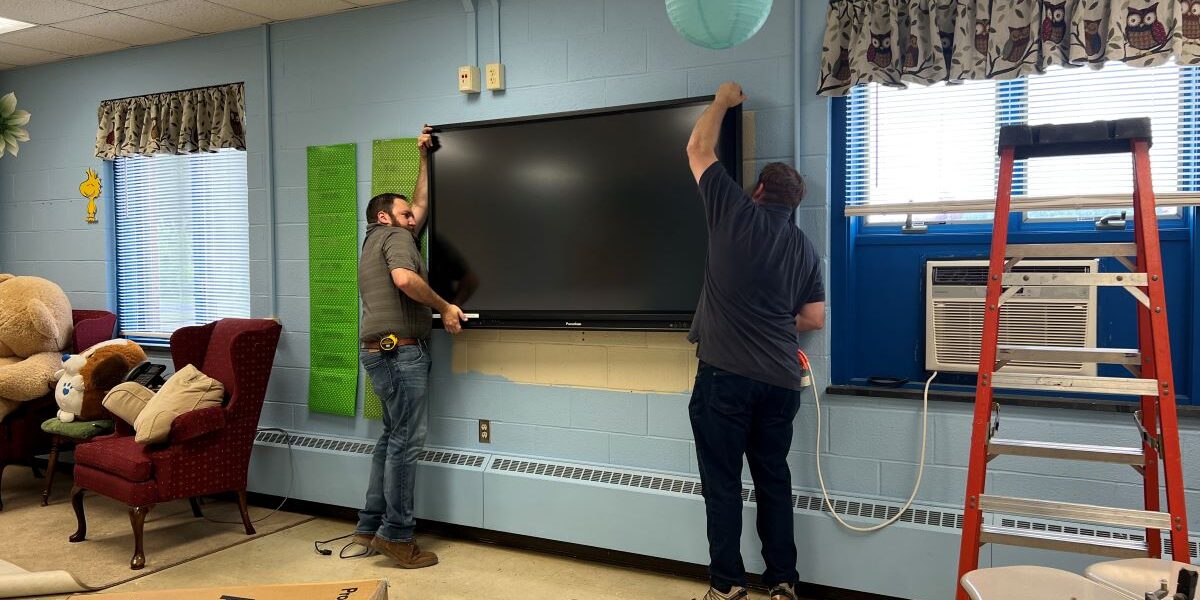In the dynamic realm of education, where innovation and technology play pivotal roles, the integration of audiovisual (AV) solutions into classrooms has emerged as a transformative force. From enriching traditional teaching methodologies to fostering interactive learning experiences, AV technology is reshaping the landscape of education.
However, achieving success in implementing AV projects requires more than just acquiring the latest gadgets—it demands meticulous planning and execution.
Here is a step-by-step guide to crafting and executing a comprehensive Classroom AV project plan.
Step 1: Gathering Information
Before embarking on the journey of AV transformation, it is crucial to gather essential information about each classroom. This includes identifying existing equipment slated for replacement, collecting details such as school names and classroom numbers, and establishing points of contact (POCs) within the institution. Additionally, determining the quantity and brand/model of new equipment required is imperative.
Creating an evaluation process and criteria setup with different stakeholders to ensure adoption. Anticipating exceptions or special requirements for certain rooms and assessing the need for facilities work orders, such as power installations or patching/painting tasks, are essential preparatory steps. Clear communication with users and POCs during this phase is paramount to manage expectations and convey that the information gathering process does not signify a scheduled project yet.
Step 2: Develop Budget and Select Products
Crafting a budget while considering specific needs for various classroom types and scenarios is the next crucial step. Identifying any special equipment requirements for subjects like Special Education, Music, or Technical Education is essential. Furthermore, assessing room sizes and building types, along with potential challenges like hazardous materials or older infrastructure, should inform budget allocation. Setting aside a contingency budget for unexpected scenarios ensures preparedness for any unforeseen requirements.
Step 3: Plan and Evaluate Options
Testing selected equipment and configurations in a pilot room(s) allows for an informed evaluation of functionality and compatibility within the educational environment. This step serves as a vital litmus test before proceeding with full-scale implementation.
Step 4: Select Final Setup and Document Installation Requirements
After thorough evaluation, finalizing the AV setup and documenting installation procedures become imperative. This includes ensuring seamless Wi-Fi coverage, determining casting solutions, and cabling requirements, and planning for necessary patching and painting tasks post-equipment removal.
Step 5: Develop Project Plan
Creating a comprehensive project plan is crucial for seamless execution. This encompasses professional training for staff, ordering staging and logistics for equipment delivery, and considering site readiness factors such as ongoing construction or academic programs.
Coordinating the removal of old inventory, procurement of necessary accessories, and implementing labeling and asset tagging procedures are integral components of the project plan.
Step 6: Communicate Project Plan and Schedule
Transparent communication of the project plan and schedule with stakeholders is essential for alignment and buy-in. Ensuring that all involved parties are aware of the project timeline and expectations fosters collaboration and minimizes potential roadblocks.
Step 7: Order Product and Reserve Resources
Timely procurement of selected equipment and reservation of necessary resources are critical to maintaining project momentum. This step ensures that equipment delivery and installation proceed according to plan, minimizing delays.
Step 8: Installation and Training
Execution of the installation process according to the project plan, coupled with comprehensive training for staff on operating the new AV systems, ensures a smooth transition to the enhanced learning environment.
Step 9: Close Out Project
Concluding the project involves updating inventory files, confirming Mobile Device Management (MDM) enrollment for devices, and resolving any outstanding issues such as Dead on Arrival (DOA) or Returns Merchandise Authorization (RMA). This final step ensures that the project delivers its intended outcomes effectively.
By following these steps, schools can successfully implement AV solutions that elevate the learning experience for students and educators alike. The investment of time and effort in careful planning and execution paves the way for a seamless integration of technology into the classroom environment, fostering innovation and engagement in education.
This information is courtesy of Pierson Computing Connection, Inc., which specializes in delivering seamless configuration, implementation, design, and installation of professional audio-visual-lighting technology, servers, laptops, networking equipment, and technology logistics throughout the U.S., www.pierson.it.











